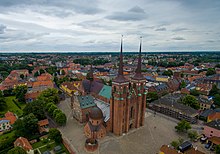
Demographic features of the population of Denmark proper, part of the Danish Realm, include ethnicity, education level, health of the populace, economic status, religious affiliations, and other aspects.

Kaj Harald Leininger Munk was a Danish playwright and Lutheran pastor, known for his cultural engagement and his martyrdom during the Occupation of Denmark of World War II. He is commemorated as a martyr in the Calendar of Saints of the Lutheran Church on 14 August, alongside Maximilian Kolbe.

Christian III reigned as King of Denmark from 1534 and King of Norway from 1537 until his death in 1559. During his reign, Christian formed close ties between the church and the crown. He established Lutheranism as the state religion within his realms as part of the Protestant Reformation, and was the first King of Denmark-Norway.
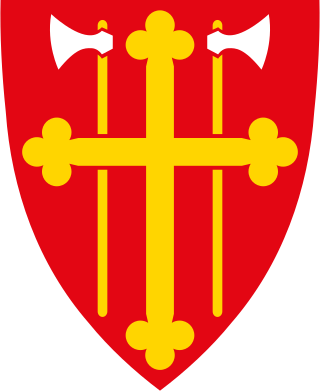
The Church of Norway is an evangelical Lutheran denomination of Protestant Christianity and by far the largest Christian church in Norway. The church became the state church of Norway around 1020, and was established as a separate church intimately integrated with the state as a result of the Lutheran reformation in Denmark–Norway which broke ties with the Holy See in 1536–1537; the King of Norway was the church's head from 1537 to 2012. Historically the church was one of the main instruments of royal power and official authority, and an important part of the state administration; local government was based on the church's parishes with significant official responsibility held by the parish priest.

The Evangelical-Lutheran Church in Denmark or National Church, sometimes called the Church of Denmark, is the established, state-supported church in Denmark. The supreme secular authority of the church is composed of the reigning monarch and Denmark's Parliament, the Folketing. As of 1 January 2024, 71.4% of the population of Denmark are members, though membership is voluntary.
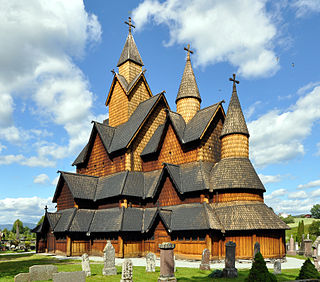
Religion in Norway is dominated by Lutheran Christianity, with 63.7% of the population belonging to the Evangelical Lutheran Church of Norway in 2022. The Catholic Church is the next largest Christian church at 3.1%. The unaffiliated make up 18.3% of the population. Islam is followed by 3.4% of the population.
Religion in Iceland has been predominantly Christianity since its adoption as the state religion by the Althing under the influence of Olaf Tryggvason, the king of Norway, in 999/1000 CE. Until then, in the 9th and 10th centuries, the prevailing religion among the early Icelanders — who were mostly Norwegian settlers fleeing Harald Fairhair's monarchical centralisation in 872–930, with some Swedes and Norse British settlers — was the northern Germanic religion, which persisted for centuries even after the official Christianisation of the state.

Islam in Denmark, being the country's largest minority religion, plays a role in shaping its social and religious landscape. According to a 2020 analysis by Danish researcher Brian Arly Jacobsen, an estimated 256,000 people in Denmark — 4.4% of the population — were Muslim in January, 2020. The figure has been increasing for the last several decades due to multiple immigration waves involving economic migrants and asylum seekers. In 1980, an estimated 30,000 Muslims lived in Denmark, amounting to 0.6% of the population.

The Catholic Church in Denmark is part of the worldwide Catholic Church, under the spiritual leadership of the Pope in Rome.

The history of the Jews in Denmark goes back to the 1600s. At present, the Jewish community of Denmark constitutes a small minority of about 6,000 persons within Danish society. The community's population peaked prior to the Holocaust at which time the Danish resistance movement took part in a collective effort to evacuate about 8,000 Jews and their families from Denmark by sea to nearby neutral Sweden, an act which ensured the safety of almost all the Danish Jews.

Religion has been a major influence on the societies, cultures, traditions, philosophies, artistic expressions and laws within present-day Europe. The largest religion in Europe is Christianity. However, irreligion and practical secularisation are also prominent in some countries. In Southeastern Europe, three countries have Muslim majorities, with Christianity being the second-largest religion in those countries. Ancient European religions included veneration for deities such as Zeus. Modern revival movements of these religions include Heathenism, Rodnovery, Romuva, Druidry, Wicca, and others. Smaller religions include Indian religions, Judaism, and some East Asian religions, which are found in their largest groups in Britain, France, and Kalmykia.

DanChurchAid is a Danish humanitarian non governmental organisation aimed at supporting the world's poorest. It was founded in 1922, and is rooted in the Danish National Evangelical Lutheran Church. It is a member of ACT Development - a global alliance of over 140 churches and related humanitarian organisations, working to create positive and sustainable change in the lives of poor and marginalized people.

Antvorskov Monastery was the principal Scandinavian monastery of the Catholic Order of Saint John of Jerusalem, located about one kilometer south of the town of Slagelse on Zealand, Denmark.
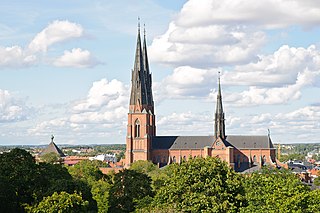
Religion in Sweden has, over the years, become increasingly diverse. Christianity was the religion of virtually all of the Swedish population from the 12th to the early 20th century, but it has rapidly declined throughout the late 20th and early 21st century.
Abu Bashar is a Syrian-born imam of the mosque of The Islamic Society in Denmark in Odense, Denmark. He was involved in protests against the Jyllands-Posten cartoons of Muhammad and in the Vollsmose terrorist arrests.

Finland is a predominantly Christian nation where 65.2% of the Finnish population of 5.6 million are members of the Evangelical Lutheran Church of Finland (Protestant), 32.0% are unaffiliated, 1.1% are Orthodox Christians, 0.9% are other Christians and 0.8% follow other religions like Islam, Hinduism, Buddhism, Judaism, folk religion etc. These statistics do not include, for example, asylum seekers who have not been granted a permanent residence permit.

Christianity is the predominant religion in Paraguay, with Catholicism being its largest denomination. Before the arrival of Spanish missionaries, the people residing in the territory of modern day Paraguay practiced a variety of religions.
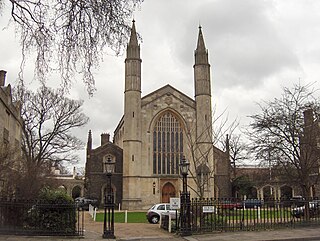
The Danish Church Abroad / Danish Seamen's Church is a Protestant church. It was founded 1 January 2004 as the result of a fusion between the Danish Church Abroad and the Danish Seamen's Church in foreign ports. It was established to help Danes travelling abroad, particularly seafarers and migrant workers.

Christianity is a prevalent religion in Denmark; in January 2023, 72.1% of the population of Denmark were members of the Church of Denmark. According to a survey based on a sample 1,114, 25% of Danes believe Jesus is the son of God, and 18% believe he is the saviour of the world. Aside from Lutheranism, there is a small Catholic minority, as well as small Protestant denominations such as the Baptist Union of Denmark and the Reformed Synod of Denmark.
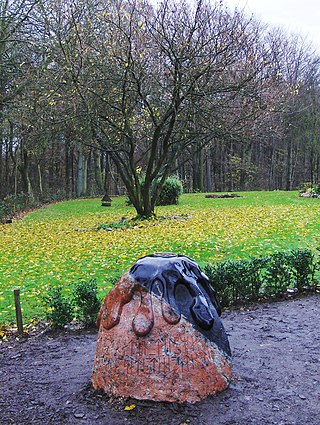
The Forn Siðr — Ásatrú and Vanatrú Association in Denmark is a Danish nationwide religious organisation of the followers of Forn Siðr, the contemporary revival of Norse paganism and culture. The Forn Siðr association was established on 15 November 1997.
